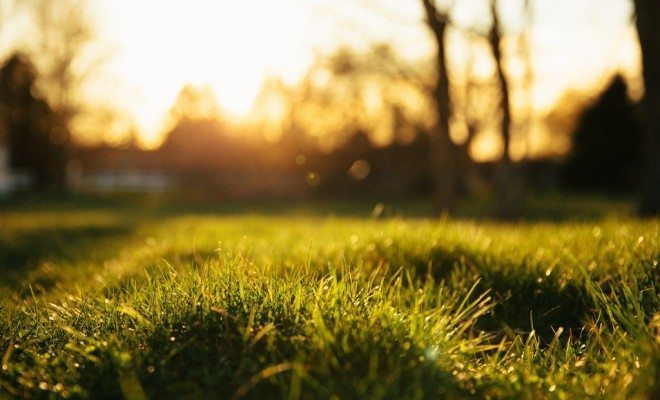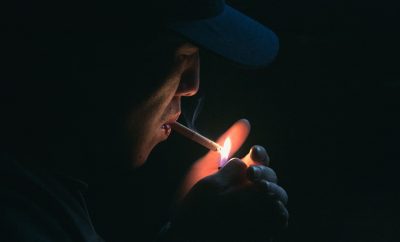
Blogs
Think Twice Before Spray Painting Your Lawn Green, California
If your pretty green lawn has gone brown due to drought, what is the best solution? Paint it! At least, this is the trend in Southern California.
Though it didn’t quite spark it, “Leave it to Beaver” heavily popularized America’s aesthetic interest in happy suburban homes with manicured lawns and picket fences. This carried over after World War II, during the rapid suburbanization of the United States. Ethnically homogenous and virtually standardized communities represented the perceived “Americanness” and values of the middle and upper classes. A manicured lawn, privately owned home, a car or two, and a nuclear family epitomized to many the ideal. In the last half century, many of these aesthetic values and symbols have not changed.
Green grass remains not only aesthetically appealing, but economically important. As the housing market rebounds, a pretty lawn is an attractive component in a home’s appearance and ability to sell. Some claim that it can add 15 percent to the home’s value. Consequently, companies have popped up that will help ensure this appearance; however, these are not landscapers or gardeners, but spray painters.
In the latest and laziest effort to display human mastery of nature and promote the aesthetic, spray painting one’s lawn green has been gaining popularity. Promoters say it is more environmentally friendly than conventional landscaping, which requires many gallons of fuel for machines, chemical pesticides, and heavy water use. They claim that it is non toxic and grows out with the grass, similar to temporarily highlighting one’s hair. Furthermore, this practice is already quite common in golf courses, ballparks, and other athletic venues. In those cases, however, the ground is built of turf or fake grass. On a front lawn, it is real grass and real dirt with things living in it. Regardless of the truth or falsehood of the non toxicity of the spray, would applying a sheet of paint to the soil clog its pores and reduce insects’ and small animals’ mobility and access to air and food? Furthermore, could covering living blades of grass in a layer of paint block its access to the sun and ability to photosynthesize?
A CBS San Francisco article interviewed a lawn painter who said that “…the grass doesn’t die completely, and when the winter rains come, the lawn will turn green again on their own.” Does this mean that the grass dies partly? Or that parts of the lawn die completely while others do not? This would seem to throw a monkey wrench into the apparent eco-friendliness of the product. A New York Times article explains that many spray companies claim that the paint includes some fertilizer “…which can help cut down on weekly watering while keeping the grass from dying completely.” Again, the explanations are vague: is the paint intended to contribute to saving the drought-stricken grass, or does it damage it and so they add some fertilizer so it is not completely deadly? Brown grass is not already dead, it is dehydrated. In fact, grass is among the most resilient of plants on the planet. Even wildfires pose no serious threat to it, as the seeds are deep enough in the soil that only the top layer will burn off; it will grow back in time.
The author of the Times article also relates that owners’ dogs come inside with green stains on their paws, and that the grass itself feels crunchy once painted. Especially considering the paint has plant fertilizer in it, is it healthful for dogs to be playing in it and licking it off themselves? The crunchiness further ties into the concerns with regard to covering blades of grass with paint. The comparison to hair dye does not hold water; hair is composed of dead cells. Applying hair spray and making it crunchy is not problematic. Grass is alive and requires the below- and above-ground components to be healthful.

White fences, green lawns, and pets, courtesy of Jesse Millan via Flickr.
The blame for this series of issues should not be dropped squarely on the shoulders of homeowners. They are finding themselves caught between a rock and a hard place, facing fines for excessive water use during the course of the drought, but at the same time being threatened with fines for brown and insufficiently tended lawns! The obsession with green lawns, dating back over a century, resides not solely within the minds of American people but is a factor in American law and policy formation. The local governments and economies clearly value it as well, and so residents are pressured to maintain that appearance.
Ultimately, people are masking the realities of the drought with artificial nature. After a century of using green lawns as a means of attempting to conquer nature, now you’re spray painting your lawn green in a continuous effort to convince ourselves that we are capable of so doing. Rather, it is a clear example of quite the opposite. Instead of turning a blind eye or applying a thin veil, we should take this opportunity to address the current situation and its causes. Be okay with the lawn being brown for a little while. There are more important things to consider.
—
Franklin R. Halprin (@FHalprin) holds an MA in History & Environmental Politics from Rutgers University where he studied human-environmental relationships and settlement patterns in the nineteenth century Southwest. His research focuses on the influences of social and cultural factors on the development of environmental policy. Contact Frank at staff@LawStreetMedia.com.
Featured image courtesy of [Chris Ford via Flickr]









Comments